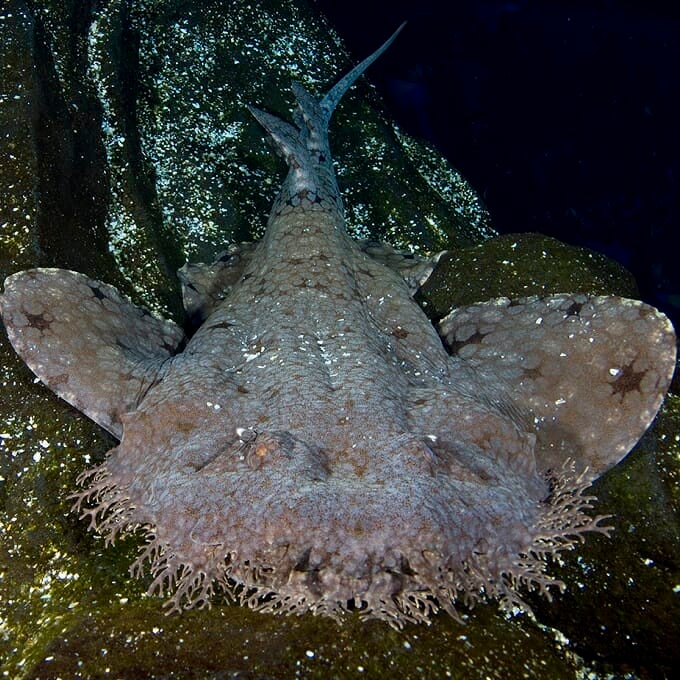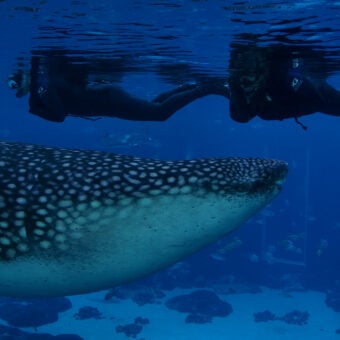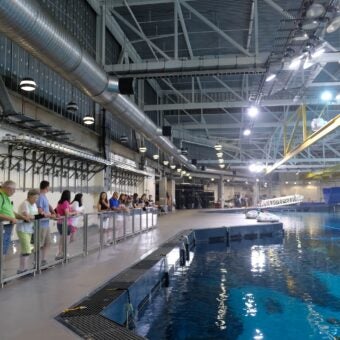-
Size
4.1 feet (1.2 m) -
Diet
Bottom-dwelling fish and invertebrates -
Range
Western Pacific Ocean -
Habitat
Ocean floor on the continental shelf and on offshore reefs
Physical Characteristics
- The maximum length of 4.1 feet (1.2 m).
- The head and body are flattened and the pectoral and pelvic fins are broad. Wide mouth; large crescent-shaped spiracle behind each eye.
- A fringe of branching skin flaps runs continuously from the pectoral fins around the front of the head forming a lace-like beard below the mouth.
- The back and fins are a brown to beige color with an intricate pattern of light and dark dots and rings. The ventral surface is a whitish-tan.
Animal Fun Fact
The name "wobbegong", from the tasselled wobbegong, is Australian aboriginal in origin, but its exact meaning is unknown. It is speculated that it may mean "living rock."
Diet / Feeding
- Diet consists of bottom-dwelling fish and invertebrates.
- An ambush predator- lies motionless on the bottom blending into the reef structure until small fish or other prey moves within striking distance, then quickly opens its mouth to suck in the prey.
- Primarily feeds at night.
Range / Habitat
- Occurs in the Western Pacific, including Eastern Indonesia, New Guinea, and Northern Australia. Commonly observed on the Great Barrier Reef.
- Found near the ocean floor on the continental shelf and on offshore reefs.
Reproduction & Growth
- Ovoviviparous- fertilization of eggs occurs internally; young develop within the female and are born fully-formed.
Conservation Status
- “Least Concern” on the IUCN Red List.
Additional Information
- Master of camouflage; almost undetectable when resting quietly on the bottom.
- The name “wobbegong” is Australian aboriginal in origin, but its exact meaning is unknown. It is speculated that it may mean “living rock.”







